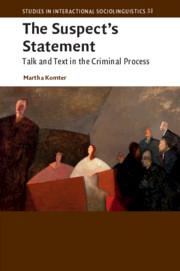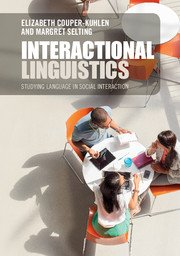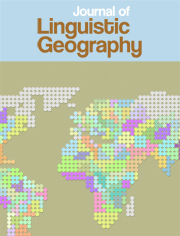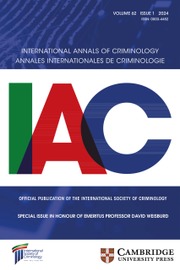The Suspect's Statement
What suspects tell the police may become a crucial piece of evidence when the case comes to court. But what happens to 'the suspect's statement' when it is written down by the police? Based on a unique set of data from over fifteen years' worth of research, Martha Komter examines the trajectory of the suspect's statement from the police interrogation through to the trial. She shows how the suspect's statement is elicited and written down in the police report, how this police report both represents and differs from the original talk in the interrogation, and how it is quoted and referred to in court. The analyses cover interactions in multiple settings, with documents that link one interaction to the next, providing insights into the interactional and documentary foundations of the criminal process and, more generally, into the construction, character and uses of documents in institutional settings.
- Provides insight for academics and legal professionals into the interplay of talk and text in institutional settings
- Supplies a step-by-step analysis of the construction of the police report in the course of the interrogation
- Uncovers the unnoticed features and unintended effects of the entextualisation process
Reviews & endorsements
‘Komter identifies a very compelling and troubling social phenomenon; in its most colloquial sense … Her analysis in chapters two and especially three is meticulous and informative, contrasting the distinction between what is said and what is written as a matter of lived work.’ Patrick G. Watson, Journal of Pragmatics
‘Komter has produced an ultra-detailed and sophisticated analysis of context in motion, a rare masterpiece reminiscent of ethnomethodological classics from the golden era of institutional ethnography … Her study is must reading for not only those in the ethnomethodological 'community' but also forensic linguists interested in police interviews as well as linguistic anthropologists studying interdiscursivity, extextualization, and multimodality in institutional contexts.’ Gregory Matoesian, Discourse Studies
‘The Suspect’s Statement provides a strong foundation for future studies that can examine the suspect’s statement in other contexts, such as judicial opinions and media reports.’ Dakota Wing, LINGUIST List
Product details
October 2021Paperback
9781107698772
219 pages
229 × 152 × 12 mm
0.302kg
2 b/w illus.
Available
Table of Contents
- 1. Introduction
- 2. The police interrogation: the talk, the typing and the text
- 3. The police report: the document, the text and the talk
- 4. The trial: documents in action
- 5. The career of a suspect's statement
- 6. Conclusion and discussion.






